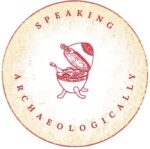The Bhima Devi Temple Project

From the secondary data, it appears that while different aspects of Early Medieval Period, like polity, economy, religion and architecture, have been studied in isolation, a concentrated effort of analysing all these details with respect to temples has not been made so far. Temples have mostly been studied as places of worship with variations in structure. Polity of the Early Medieval times is limited to dynasties that had more of a pan India influence, ignoring ruling clans that were their overlords or predecessors. Indic religion has mostly been studied as Jaina, Buddhist or Hindu, with little regard to the interaction and influences of each of these on one another and completely ignoring the influence of minor religions and beliefs that coexisted with them. Perhaps the most repetitive phrase in all these independent studies has been “ambiguous and uncertain,” probably because of the singular nature of all these studies. As a result, the connecting link between all these elements has never been elucidated.


The aim of this project is to do precisely that. Thus, the main objectives of the project can be briefly described as follows:
- To geographically review the location of the temples (Bhima Devi, in particular and others in general) and to analyse what their economic significance might have been, especially with respect to their proximity to existing trade routes.
- To understand the origin of Panchayatana Temples with respect to the emergence of the Rajput caste group in India and to examine whether or not building shrines had a political rationale behind it, akin to the Western concept of Enlightened Monarchy or Divine Right to Rule.
- To understand the nuances of Indian Architecture, especially the Vastu texts and examine how they were employed in Temple Architecture as well as ascertain whether a reconstruction of the Bhima Devi temple is possible, with the measurement systems and specifications of Ancient Vastu texts.
- To understand development of Shaivism, Shaivite sculptures and its incorporation into Hindu Pantheon.
- To understand emergence, growth and development of Indian sculpture and analyse various theories on Indian Art.
- To examine temples as tools for religious unification under the Smarta Brahmin influence and understand the influence of native and tribal cults on Hinduism and Hindu Art. For this, the authors also look into the concepts of Panchayatana Puja and Tantra associated with all Panchayatana shrines and their art.
- To study the future scope of the site with respect to archaeology, tourism and its legacy in art and civilisation.
